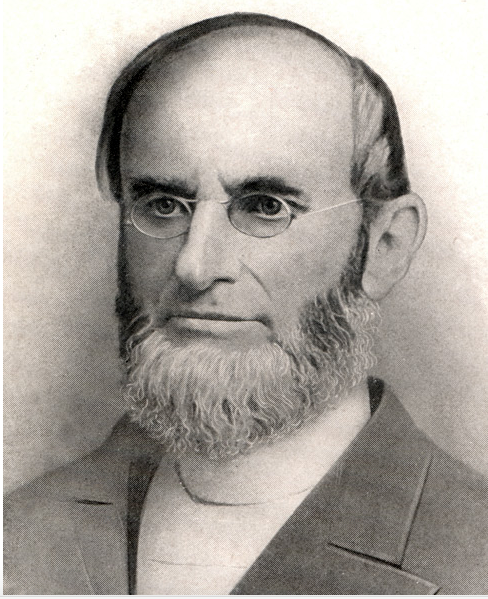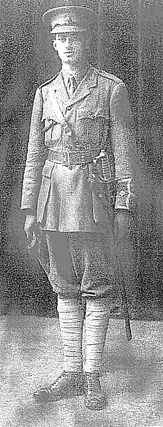Fact file:
Matriculated: Did not matriculate
Born: 1 September 1895
Died: 19 October 1915
Regiment: King’s Royal Rifle Corps
Grave/Memorial: Royal Irish Rifles Graveyard, Laventie: 1.J.12
Family background
b. 1 September 1895 at 37, Christ Church Avenue, Brondesbury, Willesden, Middlesex, as the only son of Arthur Lewis Moore (b. 1866 in New York, d. 1942 in Northwood, Middlesex) and Sara Frelinghuysen Chambers Moore (née Chambers) (b. 1868 in the USA, d. 1940 in England) (m. 1892). At the time of the 1901 Census the family lived at “Hill Ree”, The Warren, Radlett, Hertfordshire (three servants) and at the time of the 1911 Census at 34 Mapesbury Road, Kilburn, London NW (two servants).
Parents and antecedents
Both of Moore’s parents were American citizens but had become naturalized British citizens by 1914. Moore’s father came from Germantown, Philadelphia, and was a manager in a firm of coffee merchants.
Moore’s paternal grandparents were William Henry Helme Moore, BA, LLD (1824–1910), and Adelaide Louisa Lewis (1844–1922). William Henry was the son of Lieutenant-Colonel Jeremiah Moore (1779–1837) of Greenport, New York, and was educated at Everson and Halsey School, New York City, and the University of Yale. He became President of the Atlantic Mutual Insurance Company, New York City, and of the Lifesaving Benevolent Institution, and was also a Vice-President of the Seamen’s Bank for Savings.
Adelaide Louisa was the daughter of Isaac Lewis (1810–70).
Moore’s maternal grandparents were the Reverend Talbot Wilson Chambers, LLD (1819–96), scholar, author and pastor of the Dutch Reformed Church, and Louisa Mercer Frelinghuysen (1821–92), a member of a prominent New Jersey family which came to America from Germany in January 1720, headed by Theodorus Frelinghuysen (b. 1691 in Lingen, East Friesland, Germany, d. 1747 in Franklin Township, NJ, America, a Dutch Reformed Evangelical clergyman.
Siblings and their families
Brother of:
(1) Louisa (1894–1919); later Brown after her marriage in 1918 to Captain George Harold Wilberforce Linnell Brown (b. 1882 in Nagasaki, d. 1951); one daughter;
(2) Zara Adelaide (1900–75); later Brandram after her marriage in 1922 to Arthur Brandram (1892–1974); three daughters.
During the war, Captain Brown had served in France, first with the King’s (Liverpool) Regiment and then the Chinese Labour Corps, presumably because, having been born in China as the son of a British Consul, grown up there, and worked in the Consular Service there himself, he spoke fluent Chinese. Louisa probably died in childbirth and in 1942 their daughter, Louisa Helme Linnell Brown (1919–2001), married Flying Officer Maurice Coull Edmond (1916–2004). In 1929, Captain Brown married Millicent Maude Whittaker (1882–1979), and on his death left her £6,337 12s. 1d.
Arthur Brandram was one of the four sons of John Baptist Brandram, a Church Mission Society missionary to Japan who died off the coast of Japan in 1900. By 1911 he had become a bank clerk, and during World War One he was commissioned and rose to the rank of Lieutenant in the 1/9th Battalion (County of London), the London Regiment (Queen Victoria’s Rifles), and served in France. After the war he became a Trustee of the United Services for which he was awarded the OBE in 1925 and the CBE in 1951.
Education
Moore attended Malvern College, Worcestershire, from 1909 to 1914, where he became a School Prefect with special responsibility for the Library. He was a member of the College’s Officers’ Training Corps from September 1910 to August 1914 and became a Sergeant in the band. He was accepted as a Commoner to read Natural Sciences at Magdalen in 1914 but did not matriculate. When he attested, he described himself as a medical student.
War service
Moore, who was 6 foot 2½ inches tall, attested on 31 August 1914 and served as a Private in ‘A’ Company of the Inns of Court Officers’ Training Corps (“The Devil’s Own”) from that date until 2 October 1914. On 3 October 1914 he was commissioned Second Lieutenant in the 10th (Service) Battalion, the King’s Royal Rifle Corps, and promoted Lieutenant on 5 April 1915. The Battalion, which, according to its regimental history, “did nothing beyond the ordinary trench warfare during 1915”, was formed at Winchester on 14 September 1914 as part of 59th Brigade, 20th (Light) Division, and trained at Blackdown, Witley and Hamilton Camps near Stonehenge. Moore was with the Battalion when it disembarked at Boulogne on 21 July 1915, after which it rested for a day before proceeding to Elnes, c.13 miles south-west of St-Omer, where it practised route marching from 23 to 27 July. It spent 28 to 30 July at Berquin and went to the trenches at the Rue du Quesne from 2 to 8 August. From 9 to 15 August it was in billets at Noote Boom and it spent 16 to 24 August in the trenches near Rue Tilleroy, where it suffered its first casualties. It was in billets at Rue Bacquerot from 24 to 30 August and then in the trenches at Tilleroy until 5 September when it became part of the Brigade reserve at Laventie. The Battalion War Diary commented: “Men in much need of rest”. From 9 to 20 September the Battalion was in and out of the trenches near Laventie; it spent 21 to 27 September in billets at Rue Bacquerot; and although it was in the trenches from 27 September to 3 October, it did not take part in the Battle of Loos (25–28 September) because of the successes of the 2nd Division and the French. About this time, the War Diary recorded that the Battalion had lost one officer and 16 other ranks (ORs) killed in action and 34 ORs wounded since its arrival in France, and its author commented laconically: “it is appallingly wet and muddy”. After the Battle, the Battalion was in billets at Laventie from 3 to 10 October and back in the trenches from 10 to 17 October, expecting to take part in a diversionary attack that never materialized.
After the Battalion had returned to its billets in the Rue Bacquerot, Lieutenants Drake and Moore were detailed to take part in a course at the Bomb School of the 28th Brigade in Fleurbaix, about two miles south-south-west of Armentières, probably to learn how to use the No. 5 Mk 1 Mills Bomb, which was developed in 1915 and distributed to British units in 1915–16. But while Moore was handling a General Service Grenade on 19 October 1915, he accidentally caused it to explode, killing himself, aged 20, and badly injuring everyone else around him, including Drake and the instructor, Corporal Charles Richard Sharpe, VC (1889–1963), of the 2nd Battalion, the Lincolnshire Regiment. There was no Court of Enquiry because all the witnesses had been taken away to hospitals.
Moore is buried in the Royal Irish Rifles Graveyard, Laventie, Grave 1.J.12. He is commemorated on the War Memorial in the Chapel of Malvern College.
Bibliography
For the books and archives referred to here in short form, refer to the Slow Dusk Bibliography and Archival Sources.
Printed sources:
Errington (1922), p. 262.
Butler and Hare, v (1932), p. 93.
Archival sources:
WO95/2115.
WO339/31859.
On-line sources:
Wikipedia, ‘Theodorus Jacobus Frelinghuysen’: https://en.wikipedia.org/wiki/Theodorus_Jacobus_Frelinghuysen (accessed 21 January 2020).






